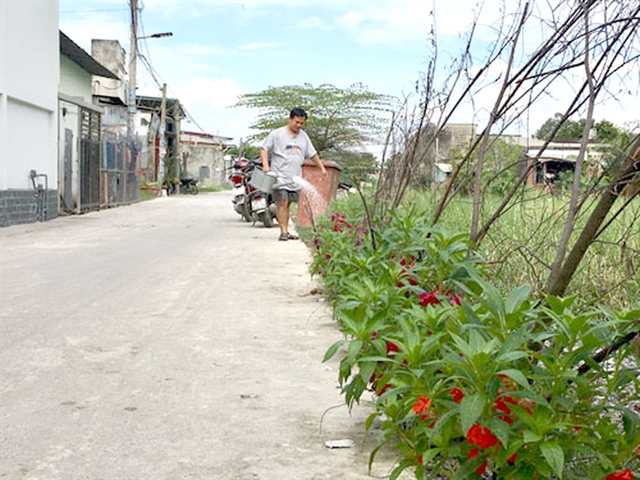 Society
Society

Hundreds of roads and alleys that faced frequent flooding in the suburban areas of HCM City have been paved and trees have been planted along the roadsides.

|
| Residents in Vĩnh Lộc A Commune plant trees along a newly paved road, which has helped to reduce flooding. — Photo nld.com.vn |
HCM CITY — Hundreds of roads and alleys that faced frequent flooding in the suburban areas of HCM City have been paved and trees have been planted along the roadsides.
Sewers have also been installed. Residents living in suburban areas such as Bình Thạnh, Bình Chánh, and Gò Vấp districts are pleased with the results.
Two months ago, a road in Hamlet 3 in Đa Phước Commune in Bình Chánh District was paved.
Nguyễn Thị Cúc, a resident in the area, told Người Lao Động (Labour) newspaper that she was happy that people in the area no longer have to deal with flooding.
"For decades, people here have suffered rain, flood, and dirt because the road was not paved. Now that the road has been covered with concrete and sewers have been installed, we have planted flowers and trees along the road to breathe new life into it," Cúc said.
After the road was paved, people in the village started to have more activities together every morning, going along the street to exercise, walk or ride a bicycle.
In Vĩnh Lộc A Commune in Bình Chánh District, dozens of new roads have been created due to new unofficially planned residential areas. Most of those roads do not have drains and sewers, so the area easily flooded during rains.
Since 2019, the People's Committee of Vĩnh Lộc A Commune has paved roads and installed more drainage systems.
Trần Vũ Hữu Duy, chairman of Vĩnh Lộc A Commune People's Committee, said that most of the projects were included in the Rural Quality Improvement Project in the commune for the 2016-2020 period.
According to the People's Committee, six more roads will be paved and sewers installed by the year end.
Vĩnh Lộc A has rapidly urbanised on an area of 2,000 hectares with more than 130,000 people. Traffic there now is mainly on rural roads that face heavy floods during rains. — VNS




